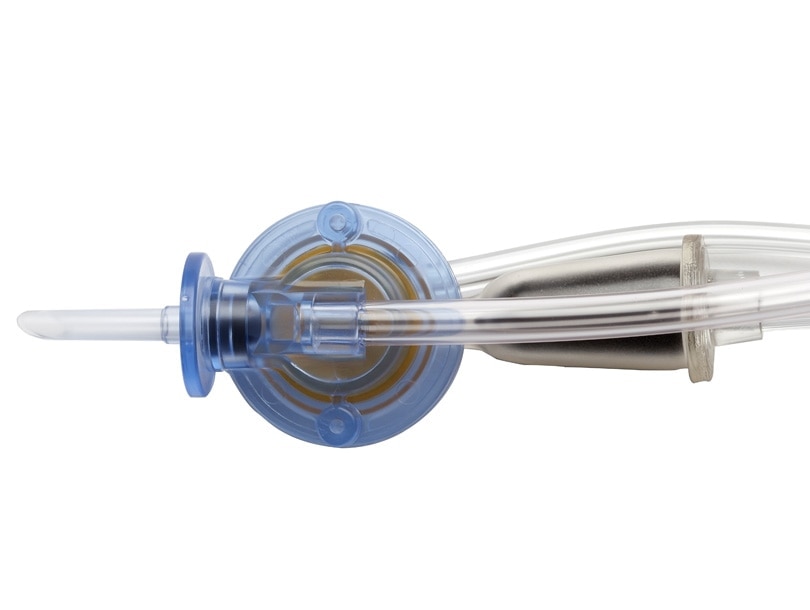RELATED PRODUCTS NOT AVAILABLE
true
Support
Sales
1.844.8.BD.LIFE (1.844.823.5433)
Thank you for contacting our sales team!
A sales representive will get in touch with you shortly.
Ordering
1.844.8.BD.LIFE (1.844.823.5433)
1.800.531.4140
GMB-MedSpec-Ops@carefusion.com
Onsite Visiting
75 North Fairway DriveVernon Hills, IL 60061United States
Customer Service
1.844.8.BD.LIFE (1.844.823.5433)
7 a.m. to 5:30 p.m. CT Monday to Friday
1.800.531.4140
Customer_Service@bd.com
Endo-Flo™ Irrigator
Compressed Gas-Driven Irrigation System with Nezhat-Dorsey™ SmokEvac™ Trumpet Valve or Davol™ Trumpet Valve Tubing Set Option


- Overview
- Products & Accessories
- EIFU & Resources
false
-
X-Stream™ Irrigation System
-
Ergonomic in-line and pistol-grip instruments
-
Hydro-Surg™ Plus Irrigator
-
Ergonomic reposable laparoscopic scissors
-
V. Mueller™ and Snowden-Pencer™ open instrumentation
-
Ergonomic ring-handle instruments: modular
-
V. Mueller™ laparoscopic instruments
-
Ergonomic ring-handle instruments: single piece
-
Traditional laparoscopic Snowden-Pencer™ instruments
-
IMPRESS™ instrument management system
-
Genesis Sterilization Containers
-
Accumulated Sales Order Program
Indications
The Endo-Flo™ Irrigator is designed to provide controlled powered irrigation during laparoscopic procedures. The pulsatile action of the pump mechanism helps flush blood and tissue debris from the operative site during laparoscopy to aid visualization. It may also be used for resection of filmy adhesions (i.e., hydrodissection) and peritoneal lavage.
Contraindications
This product is indicated only for laparoscopic irrigation. Use of this product in hysteroscopy or for cavity distention is contraindicated. Use of this device for intra-abdominal irrigation is contraindicated whenever laparoscopy is contraindicated. See operator’s manual of your laparoscope for absolute and relative contraindications.
Warnings
- This device has been designed for single-use only. Reuse, reprocessing, resterilization or repackaging may compromise the structural integrity and/or essential material and design characteristics that are critical to the overall performance of the device and may lead to device failure which may result in injury to the patient. Reuse, reprocessing, resterilization or repackaging may also create a risk of contamination of the device and/or cause patient infection or cross infection, including, but not limited to, the transmission of infectious diseases from one patient to another. Contamination of the device may lead to injury, illness or death of the patient or end user.
- This is a high pressure, compressed gas driven pump, and it should be operated at the lowest pressure settings compatible with adequate irrigation, never exceeding 80 psi, to stay within specified impact pressure of the device.
- Intraperitoneal pressure monitoring is mandatory when utilizing this device in laparoscopy to ensure optimal pressure levels.
- Prior to insertion and during use of the irrigation probe in the peritoneal cavity, the operator must confirm through visualization that fluid exits the irrigation channel when the irrigation trigger is activated to ensure proper function and avoid excessive air entering peritoneal cavity.
- The absence of fluid exiting the irrigating channel on activation signifies either a depletion of fluid from the system and a need for re-priming or a system malfunction. This absence of fluid flow necessitates the immediate withdrawal of the irrigation probe from the peritoneum to troubleshoot the system outside the peritoneal cavity. If the absence of flow is due to priming problems or line obstructions, after correction the probe can be re-introduced when the device is fully functional. Otherwise, the pump should be replaced.
- Failure to respond promptly to absent fluid flow on activation of the device can, in the event of pump membrane rupture, cause a significant rapid hyperinsufflation with complications of subcutaneous emphysema, pneumothorax, and cardiopulmonary compromise. When operating in the laparoscopic mode, surgeons should be aware of hyperinsufflation, and if it occurs from any cause, treat it with immediate intraperitoneal decompression and appropriate cardiovascular and ventilatory supportive measures.
- If there is leakage of irrigation fluid out the exhaust line either while priming during set-up or during use, discard and replace the system as this may indicate pump malfunction.
- The exhaust line must be open to atmosphere. Do not connect, clamp or obstruct exhaust line otherwise internal pressure will increase and damage the pump.
- As with any surgical procedure, intravasation should be closely monitored by the attending physician in order to prevent reported complications associated with intravasation.
- If electrosurgery is to be used, the physician should visually confirm that the electrode is not in contact with conductive irrigation fluid. Contact of the e lectrode with conductive irrigation fluid may compromise the electrode energy discharge.
- Do not connect nitrogen/air connector to CO2 gas because the gas will be vented into the room atmosphere.
BD-14834
true